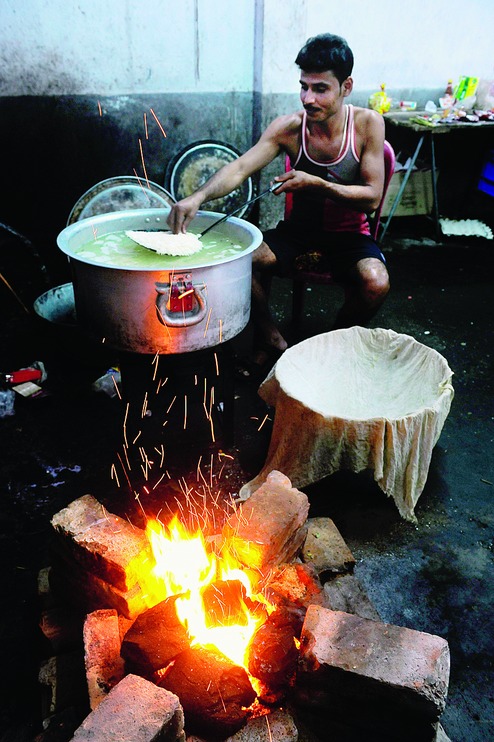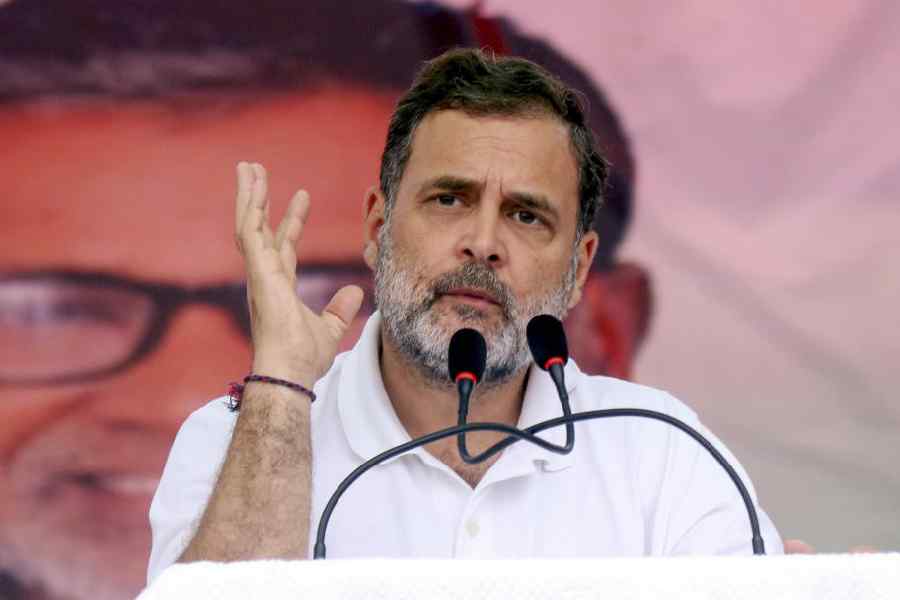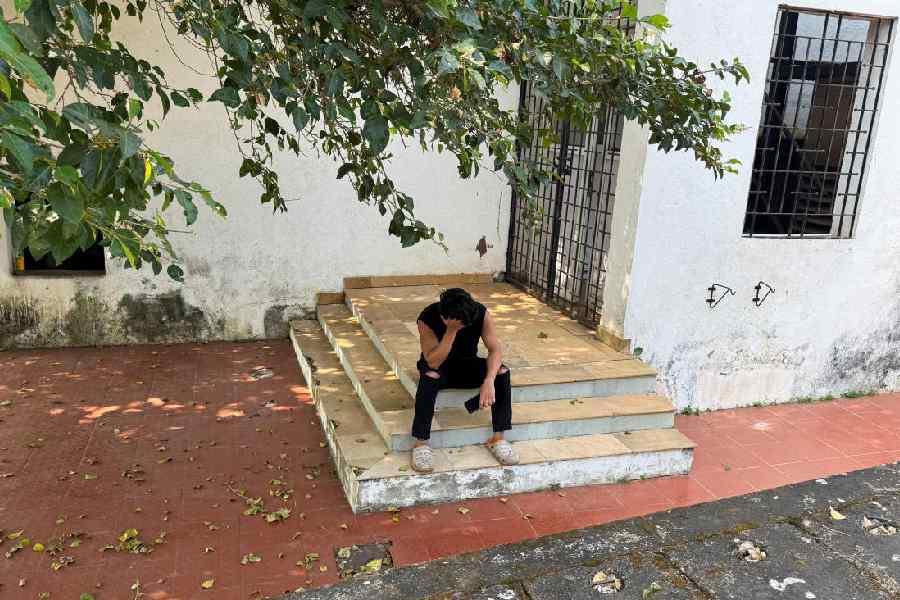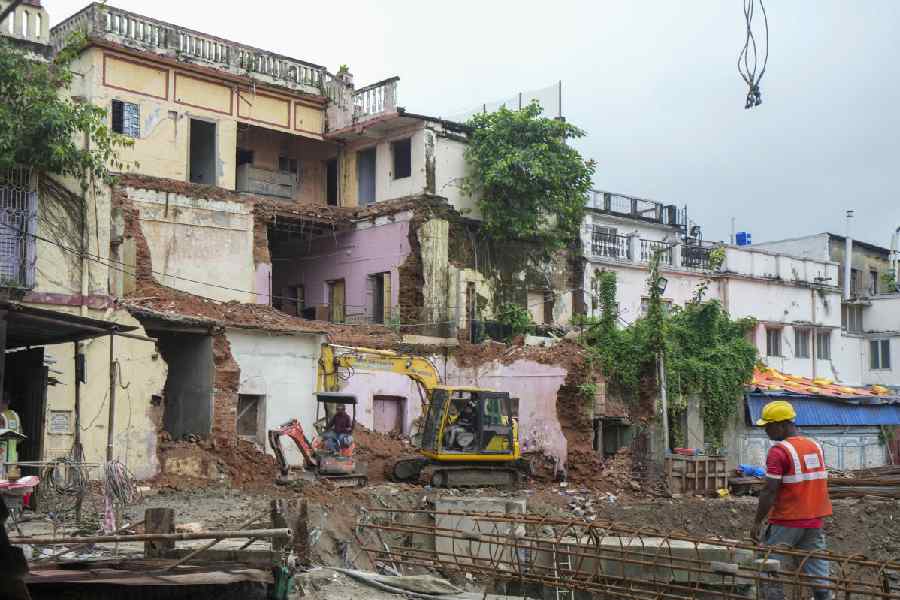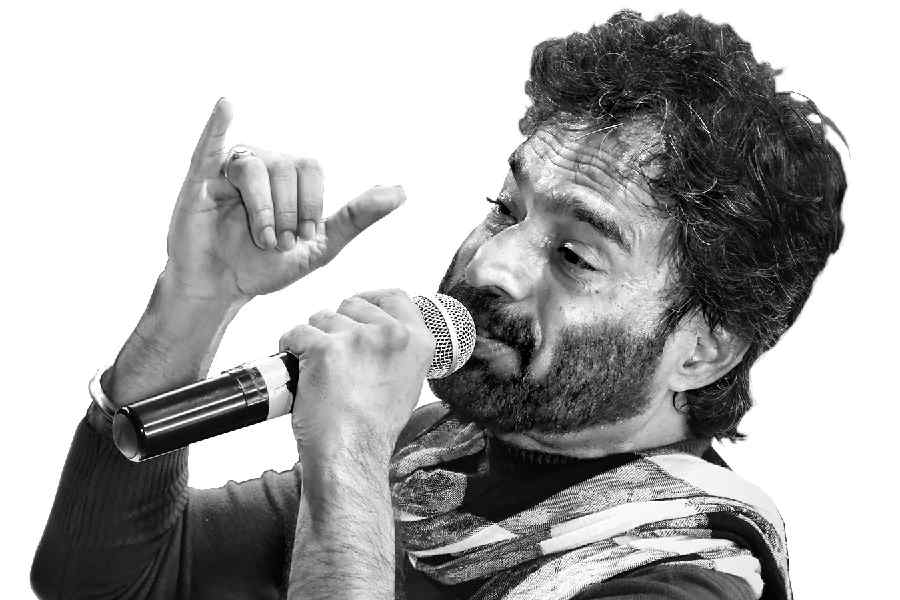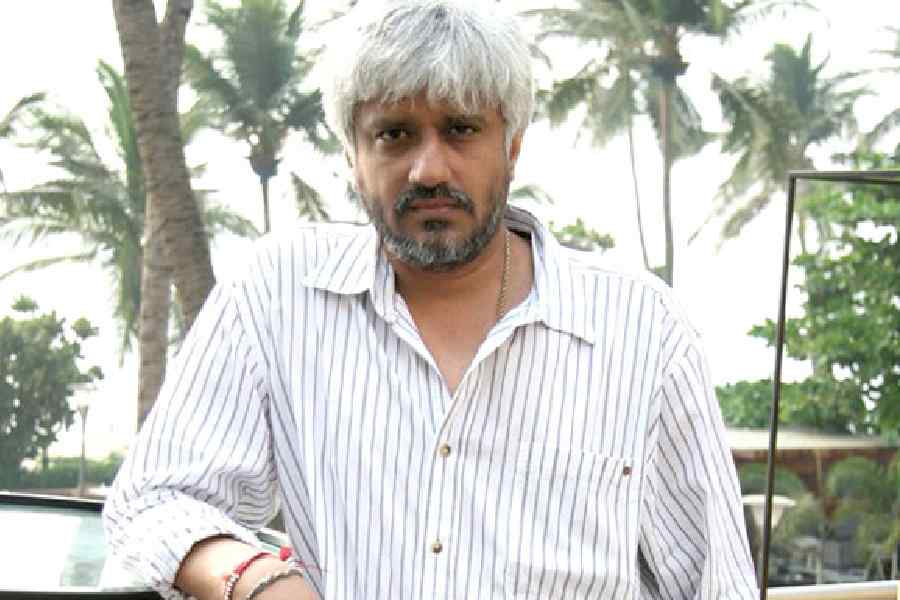

Picture Credit: Subhendu Chaki
It is only 6am, but the lanes adjoining north Calcutta's Sovabazar Rajbari - of the erstwhile royal family of the area - are bustling with activity. Men in dhotis and vests, and gamchhas tied around their waists are loading a small truck with utensils of different sizes, iron stoves, gas cylinders...
This is Thakurpatti, home to the thakurs - the term for the oldest professional cooks of Bengal. They continue to be in demand, travelling the length and breadth of the city and also far-flung places such as Madhyamgram and Barasat to cook for weddings and other ceremonies.
Typically, these thakurs hailed from Odisha. It is said they came to Calcutta in the early 19th century, during Raja Naba Krishna Deb's reign. But according to food historian Pritha Sen, migrations from Odisha to Calcutta date back to the time when Vaishnavism was sweeping through Bengal. A proponent of Vaishnavism, Nadia's Mahaprabhu Chaitanya had stayed in Odisha for a long time and made an impact on the people.
Aloke Krishna, a descendant of Naba Krishna Deb, however, tells a different story. According to him, a lot of Odiyas were indeed in the service of the Deb family but as palanquin bearers. He says, "We had Vraj Vasi Brahmins and cooks from Chittagong and Midnapore, who dominated the kitchen [they excelled in vegetarian food, the Rajbari staple]. But slowly things changed. Odiya cooks were eventually engaged."
In the book, Men, Women, and Domestics: Articulating Middle-class Identity in Colonial Bengal, Swapna Banerjee cites a 19th century reference to a man named Jagadanda, who was the leader of Odiya palanquin bearers in Dhaka in eastern Bengal and ran a "cook-manufacturing factory" with the help of a real Odiya Brahmin. She writes, "In this factory, non-Brahmin Odiyas were turned into Brahmin cooks. On an average hundred "fake thakurs" were manufactured every year in this factory."
What Thakurpatti resident Balai Panda says, helps us join the dots - from Vaishnav influence on Odiya cooking to fake thakurs in Bengali households. He says, "We are called thakurs, not because we are all Brahmins but because we come from the land of Lord Jagannath." Most likely, impressed by the adroit vegetarian preparations of Odiyas, wealthy Bengali families engaged some as cooks. "Odiya cooks were well aware of the art of cooking vegetarian food," says Sen. Balai claims chhanar kalia and chhanar dalna - chhana being the Bengali term for cottage cheese - are Odiya invents. But in time, as the trend caught on and supply fell short, there arose a need to create "fake thakurs".
In an email from the US, Banerjee, who teaches history at Brooklyn College, tells The Telegraph, "I think the reason was embedded in market forces and demographic conditions than in the desire of one ethnic group to establish mastery over another. First, we need to recognise that majority of the domestic workers in colonial Calcutta, Bengal, came from adjacent areas... Second, in the late 19th century, Odisha faced severe famines and predictably created surplus agricultural labourers who sought employment in Calcutta, the colonial metropolis." She talks about how the linguistic and culinary affinities helped the people of Odisha find a receptive market in Bengal.
But what purpose did the fake caste identity serve? Banerjee argues that having a Brahmin cook, even a fake one, became a marker of middle-class status. She writes in her book: "First, caste became a mode of distancing the middle-class from its 'other'. Second, having a Brahmin cook implied an effort to climb up the ladder of caste hierarchy for some lower caste groups who had become ' bhadralok'. And then employing a Brahmin, a priestly caste, by a lower caste 'bhadralok' could also be a symbol of power for the colonial middle-class."
The funny thing is that much has changed since this trend was formalised. Arjun Panda, who runs a hotel in Shyambazar, talks about how all that anyone ever wants to eat or serve are kebabs and biryani. The progeny of Odiya cooks are also not keen to join the profession. "Odisha has now developed a lot. We find jobs in our home state," says Rabi Panda, who has been a cook in Calcutta for almost two decades.
What has not changed is the bustle of Thakurpatti and the multiplying fake thakurs. The current lot are a diverse bunch, of varying faiths and castes, from Odisha, Bihar and rural Bengal of course. The stomach, after all, has room enough to entertain differences.

